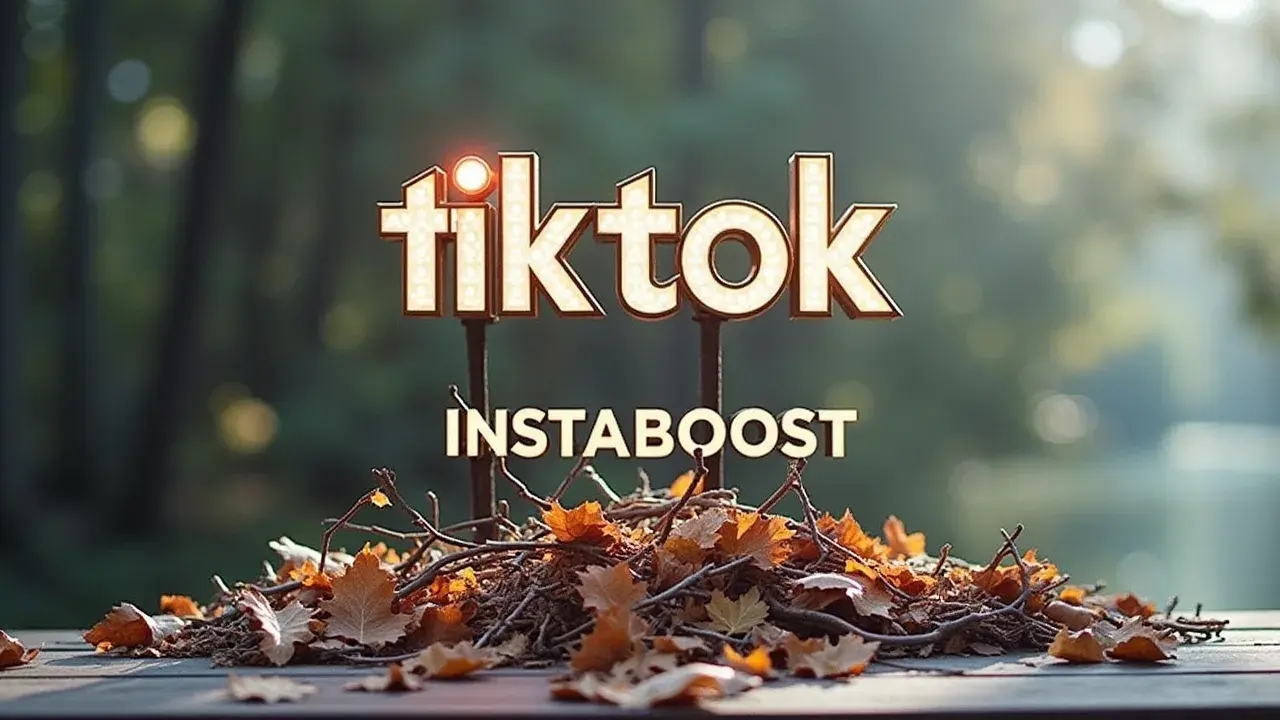Why Does TikTok’s Best Content Look Accidental?
Strong TikTok posts often feel spontaneous because casual pacing and texture invite attention before a striking detail lands. When the first three seconds seem unplanned, viewers stay longer, and in-app editing can match the speed and format fit needed for that effect. Track comments and repeats in the first hour to gauge lift and refine edits. The smart path is quick cuts, platform-native tools, and early signal checks to validate direction.
The Charm of the “Accidental” Video
TikTok’s strongest videos don’t announce themselves as “content.” They feel like you’ve stepped into something midstream – half a conversation, a camera at the wrong angle, a song that happens to be playing – and somehow they keep you longer than the polished ones. That effect isn’t accidental. It’s a set of choices that work because the app favors signs of spontaneity. A cropped frame reads as a moment caught, not staged. An unfinished thought lets you fill in the rest.
Everyday noise – a pan clanking, a car horn under a voice memo – gives it the texture of real life instead of a pitch. Even the looped audio does two jobs: it hooks you, and it signals that other people are watching too. If the sound gets stuck in your head, the video feels worth another play. This anti-polish lands because the For You page functions like a quiet Turing test. You’re always weighing: is this someone thinking out loud, or a brand running a plan? Low-fidelity signals tilt that call.
We’ve learned to be wary of the glossy stuff, so creators build trust by leaving the seams visible. Not out of laziness, but because it’s the right setting for the medium. That “accidental” look narrows the distance between maker and viewer, trims the friction, and moves you faster from first frame to hook. In a feed where a thumb hovers over the next swipe, a few milliseconds can decide the click. The style ends up feeling native to the app: quick, open, provisional. From loop-friendly hooks to off-center framing to conversational cuts, these choices tend to beat platform polish, and “authenticity” starts to look less like a moral stance and more like a design choice you make on purpose, then keep adjusting as you go and TikTok audience expansion.

Receipts From the Feed: How “Accident” Wins in the Data
I’ve seen this across a lot of campaigns. When the first three seconds feel a little off – a slightly crooked frame, a half-heard hook, a caption that looks tossed on – watch time goes up. Not because people want chaos, but because TikTok rewards completion and replays, and those “accidental” cues make it easier to keep watching.
In A/B tests for CPG and music launches, the glossy cuts – studio lighting, scripted intros – lost by 18 – 32% on hold time compared to scrappier versions that drop you straight into the moment. Same budget, same offer; only the packaging changed. The accidental look reads “not an ad” faster than any disclaimer, so people stay instead of swiping. You can see it in audio too. Sound that feels found – a bit of room tone, a laugh, a clip that starts on a breath – loops better. That’s why tracks with some ambient noise can take off on TikTok before they move on Spotify.
And this isn’t about faking mistakes; it’s about removing the signals that scream “production.” Crop a touch tighter, let the first word clip, let the background be specific and a bit messy. The feed tends to reward anything that feels like a moment already in progress. If you want a term to dig into, try “TikTok watch time optimization” – the top levers line up with the same cues we call spontaneity and boost tiktok follower count.
Designing for the “Oops”: A Repeatable Playbook
“If your plan depends on perfect conditions, it’s not a plan.” So plan for things to be a little off, and make that clear on purpose. The best “accidents” on TikTok are built from simple parts: how you open, a hint of friction, and a loop that doesn’t fight you. Start mid-action so the first frame raises a question; people stick around to close the gap. Add one small snag – a crop that’s a touch tight, a tiny mic rub, a caption tossed on in a hurry – not as sloppiness, but as a cue to pay attention.
Then make the loop easy: let the last moment echo the first so a replay feels like moving forward, not watching it again. This isn’t anti-craft; it’s quiet craft that doesn’t call attention to itself. Use constraints that help: one take, window light, handheld that breathes, a hook that starts on the second word, and a caption that suggests there’s context you missed (“ok but look at 0:07”).
Treat sound like story; a clear five-second motif can turn into the thing people remember, and the loop makes it stick. If you’re a brand, set up a simple grid: three cold opens, three small “oops” tells, two loop endings – shoot them all in half an hour, post the nine mixes, and let the feed tell you what works. You’re not chasing a miracle; you’re lowering the friction to finish and rewatch, which the system rewards, and the rest is just social weather we all try to read, like how tiktok likes ebb and spike for reasons that only make sense in hindsight. The polished version can live on YouTube; here, speed and a bit of mess get you further. If it feels like a scene you walked into rather than a video selling you something, you’re close. That repeatable “oops” is the point, and you can run it again tomorrow without overthinking it.
When “Accident” Becomes a Costume
I don’t trust people who say they love this part. The data is real – “accidental” cues do lift hold time – but there’s a point where the crooked frame becomes a uniform, the tossed-on caption turns into a brand guideline, and the whole thing goes flat. Treating accident like a template misses why it works: it turns attention into a small puzzle. If every clip opens mid-action with the same clumsy hook, people adapt; the pattern stops raising questions, and completion and replays flatten. The pushback isn’t anti-scrappy – it’s anti-rote. Viewers don’t stay because a shot is messy; they stay because the mess suggests there’s something to figure out, and the loop pays it off.
That’s a delicate trade. When you optimize for watch time too hard, you sand off the ambiguity that powers it. And it mixes up signal and source: the reason “the best content looks like an accident” isn’t the look, it’s the structure – tension, delayed context, payoff timing. You can hit those with a steady camera and still do fine on TikTok if the cut respects curiosity, and plenty of accounts gain tiktok traction by leaning on structure over styling.
So test the “oops,” but also test the flip side: clean image, noisy idea; clear caption, sideways sequence; a hook that’s understandable but incomplete. If your only lever is faux-chaos, you’ve built a one-trick channel that fades with the trend cycle. The better move is to design for variance – not constant mess – and keep one variable honest: the novelty of the question your first frame asks. That works across niches, from a song teaser to a recipe step you hold back until the end, and it’s a healthier search strategy than chasing “accidental” aesthetics.
Leave Room for Air
Not everything needs a tidy bow – some things need air. The pieces we’ve talked about – a frame a little off, a cut that lands mid-action, a small puzzle – only work if there’s room for someone else to step in. The ending of “accidental” work isn’t a big finish; it’s holding back. Stop before the answer sets. Leave the last beat open so the loop pulls people forward. On TikTok, where polish fades fast, the best “accidents” feel alive because they don’t tie everything off.
You can hear it in the audio choices: clips that ride the pre-chorus, not the chorus, stick because your brain wants to finish the line. That’s why certain sounds become earworms – they’re hooks with a little slack around the edges, the kind you notice when you skim notes on smart sharing for TikTok creators. The move is simple and useful: design a soft landing that invites comments, duets, or a second watch by cutting on intention instead of applause. Don’t close every loop in the video; close one in the next post or in the caption. That way the “accident” doesn’t turn into a costume, and your approach stays repeatable without turning into a template. If your plan needs perfect conditions, it isn’t a plan – so build in slack: one step that can fail without breaking it, one beat you can skip, one place viewers can add a line. The best TikTok work looks accidental because it treats attention like a partner. Leave some oxygen in the frame, and let the audience light the fire.
The Hook That Pretends Not To Be One
The best TikToks don’t announce themselves. They start mid-breath. You land in a crooked countertop, a half sentence, a hand off-frame – and your brain tilts toward it. That’s the point of the “accidental” look: it asks the viewer to meet you halfway. The idea is simple, and easy to mess up. When people try to brand the crooked frame, they lose what worked in the first place – the sense you walked in on something that was already happening.
The good version isn’t messy for the sake of it. It’s a clear plan with room to breathe. A cut that hits on the inhale. A caption that leaves out the verb you expect. A loop that clicks one beat later than you want. That’s why some sounds feel sticky: a tiny hook that feels unfinished, so you watch again.
Treat “accident” like a costume and it turns into a bit. Treat it like a puzzle and people lean in. The question I keep in mind is, what can I leave out so someone else fills it in? Not vagueness – specific details with a gap. That gap turns attention into action: comments that supply the missing word, stitches that straighten the angle, saves to replay the off-center beat. It’s not anti-craft. It’s craft that keeps a low profile and optimizes for curiosity instead of closure. If you want a TikTok to feel accidental, build a sturdy frame that can carry some mess – then stop one step short and ready-to-go TikTok growth is just a phrase you overhear, not a promise you underline.















